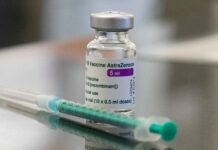Dozens of Primary Health Centres, PHCs, built in the last two years across the country by the federal government at a cost of over N2 billion have remained unused, in spite of desperate need for such health facilities.
This is principally because money was appropriated, contracts awarded and construction commenced on the PHCs, without proper liaison and linkages with state and local governments where they are sited.
While most of the PHCs are still locked up months after they were built, others that have opened to the public lack equipment, drugs and health personnel to man them.
According to the data from Budeshi, an open contracting platform, the National Primary Health Care Development Agency, NPHCDA, awarded 91 contracts for the construction of PHCs in 2014 and 2015.
The Budeshi data showed that the new PHCs, which were awarded mainly at the uniform sum of N21, 986.893.00 to different contractors in many states raised the question of whether NPHCDA carried out competitive bidding on the projects.
A monitoring of these new PHCs by the Public and Private Sector Development Centre, PPDC, revealed that many of them were not functional and those that had been opened for services lacked the basic necessities to function properly.Under the Nigerian federal system, building and maintaining of PHCs are the responsibility of state and local governments.
The National Health Act in Section 2 listed all the services to be provided by the Federal Government and they do not include the building of PHCs.
The PPDC Report, which formed the basis of the Budeshi data, showed that only a few of the primary health centres built by NPHCDA in Delta and Benue were functional while the rest were locked and abandoned.
The report also showed that majority of the 14 new PHCs in Delta State were not functional and that only one seemed to be running optimally while few others that had been opened for services lacked staff, drugs and equipment.
A community member at Igbogili in Delta State told PPDC monitors that the new PHC, constructed by Sharpstone Company Limited, was locked up by the contractor who claimed that he had not been paid.
PPDC monitors observed that one of the new PHCs in Benue State, constructed by Sataab Investment Limited at Yandev Mbaluka in Gboko Local Government Area had been overtaken by grass as the facility was locked and had no access road.
The report also pointed out that other states of Lagos, Oyo, Ogun, Niger and Kano that have functional new PHCs had a shortage of staff as well as lacked drugs and equipment.
The Nigerian Health Watch, an online health focused magazine, in a report observed that “We can build, refurbish, staff, equip primary health care centres, but making them sustainably functional is a complex task that cannot be managed from Abuja.” “The role of the federal government should be that of a catalyst, guide, instigator, but not to deliver primary health care directly,” the magazine stated further.
Meanwhile, the PPDC report raises the question about how accountable the NPHCDA has been in the implementation of the Primary Health Care Under One Roof, PHCUOR. The National Council on Health approved the PHCUOR in 2011 to reduce fragmentation in the delivery of PHC services and integrate all PHCs under one authority. Under this arrangement, the NPHCDA is supposed to work hand in hand with the state PHC boards, local governments and communities in delivering PHC services.
Former Minister of Health, Professor Eyitayo Lambo said that PHCUOR was a new attempt to ensure a unified state-level structure that should be responsible for coordinating the management of PHC system and services.
But the PPDC report clearly shows that the local governments and communities were not carried along in the construction of the PHCs as the NPHCDA seemed to be interested in erecting the buildings without involving community stakeholders and mapping of existing PHCs in the communities.
According to the minimum standards for PHC in Nigeria, the Ward Development Committee, WDC, is responsible for co-managing the primary healthcare centres at the ward level. The WDC, which is made up of community leaders co-manage these PHCs with the local government.
Checks by icirnigeria.org show that the WDCs were not involved in the construction and management of the newly constructed PHCs. They had no say in the matter at all. This raises further questions on the seeming poor level of citizen participation and accountability in the construction of these PHCs.
The PPDC report indicated that one of the abandoned new PHC constructed by Federated Project Limited at Awume in Ohimini Local Government Area of Benue State is sited beside an old PHC which was operational but lacked adequate staff, drugs and equipment, a glaring case of duplication and waste of funds.
A report published by icirnigeria.org in 2014 revealed that paucity of funds and government policy put PHCs in a state of total disrepair, leading to a largely inefficient healthcare delivery system at the grassroots.
Reports by World Health Organization, WHO, United Nations Children’s Fund, UNICEF, and the Federal Ministry of Health show that Nigeria loses about 2,300 children under the age of five and 145 women of childbearing age daily to inefficient health services.
Nigeria comes second to India in maternal and child deaths and accounts for about 10% of global under-five deaths. These deaths can be prevented if primary health care delivery in Nigeria can be made to function better in a manner that is accountable to the citizens.
Speaking at the first annual PHC Lecture organised by NPHCDA on December 8, 2015, former Minister of Health, Eyitayo Lambo, said that if the primary healthcare delivery system and the other two healthcare delivery systems were functioning well with effective referral system among the three tiers in place, the PHC system should be able to resolve the health problems of at least 70% of the people, compared to the less than 20% of the population that it currently attends to in Nigeria.
According to Lambo, given the high burden of infectious diseases and the related morbidity and mortality in Nigeria and the fact that about 70% of the population lives in rural areas, making PHC the cornerstone of our national health system is a step in the right direction.
As the PPDC report indicates, the building of PHCs without corresponding contributions from the states and local government in terms of staffing, equipping and maintaining of adequate drug supply will just be a waste of money by the federal government.
Appallingly, without addressing the obvious disconnect between healthcare strategies at different tiers of government, the Nigerian Muhammadu Buhari administration on January 19, 2016, announced a plan to rehabilitate and construct 10,000 PHCs within two years, at least one in each political ward across the federation.
A committee was also set up to map out all the existing PHCs in the country and determine how functional they are. Apparently, the committee discovered the futility of the government plan because on September 29, 2016, the Minister of Health Professor Isaac Adewole gave an indication that the federal government would not be able to implement the plan because it would put an additional financial burden on federal government and state governments might not meet up with their own contributions in the face of economic recession in the country.


























